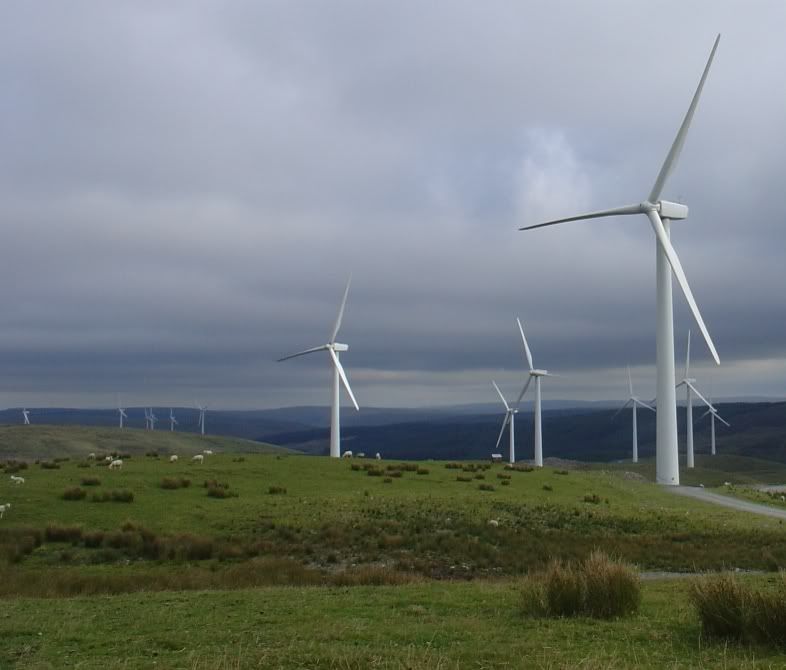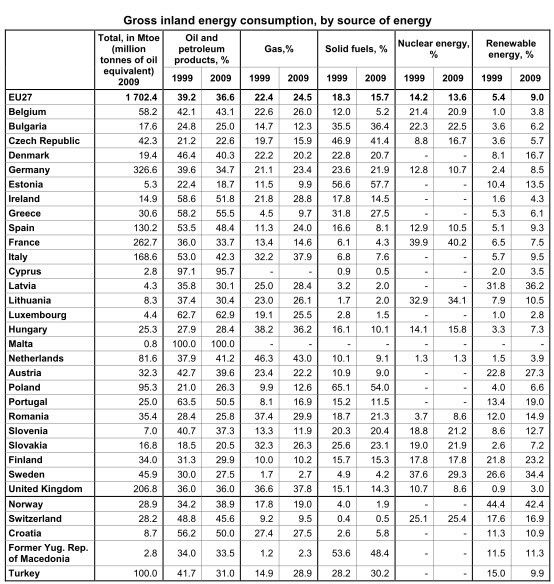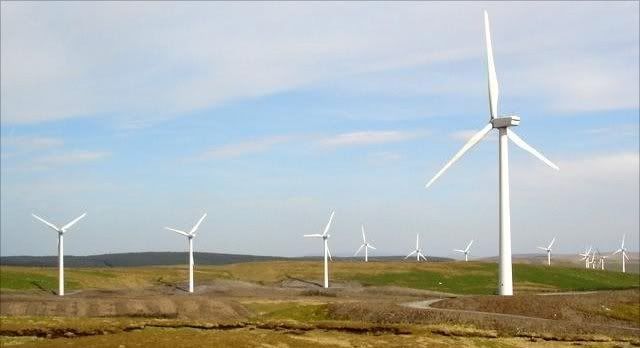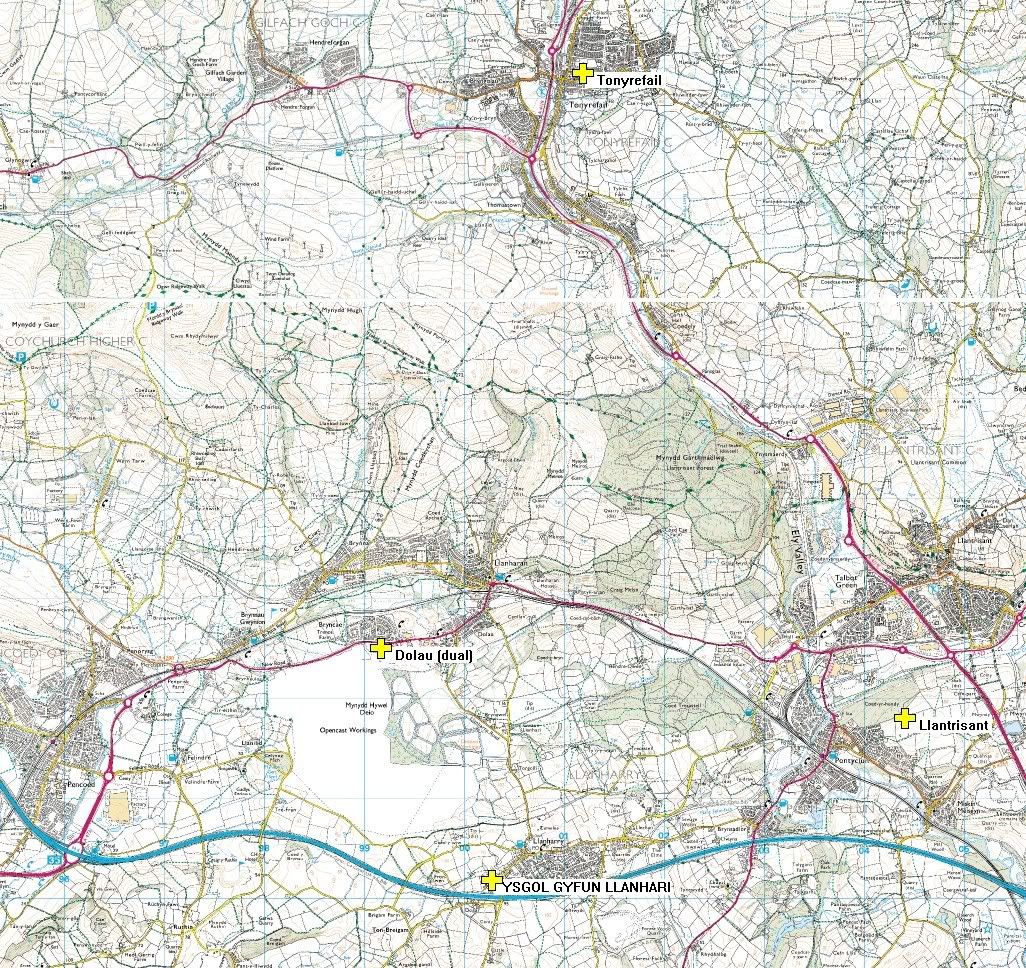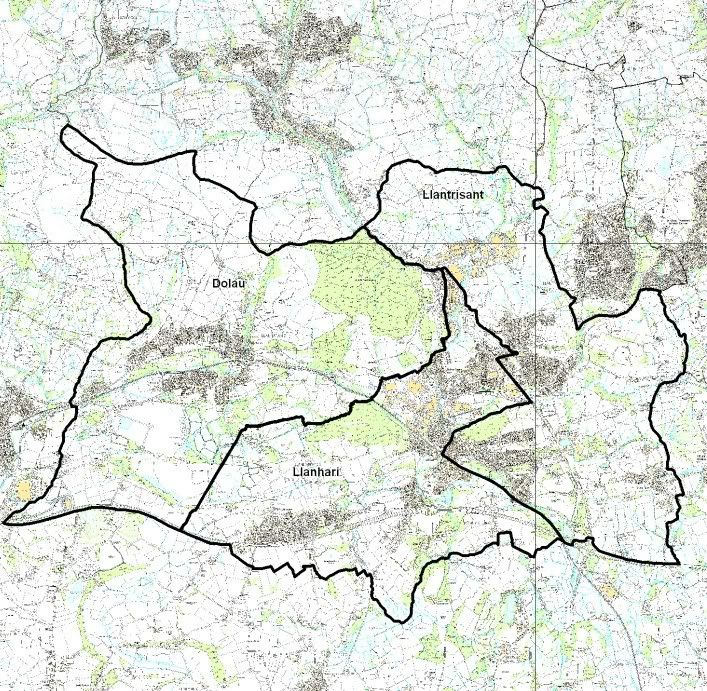After I wrote my previous post regarding the extent of onshore wind developments in Wales, Carwyn Jones made a written statement on the subject. As always, it's best to read the statement itself rather than the way it was reported:
Written Statement - Planning for Renewable Energy in Wales
The reaction to this statement from some quarters took me a little by surprise. For example Glyn Davies, one of the most prominent voices against wind power, was reported as saying it was "hugely welcome news - it's all I could have hoped for." One thing I have learned, for example in this post and the subsequent comments, is that Glyn doesn't really have much idea of what he's talking about when it comes to wind energy. It appears to me that he has jumped on a bandwagon, and having found himself to be unable to handle the ride, wants to get off quickly by claiming some sort of victory without actually getting what he'd wanted.
In the most basic terms, what Carwyn has done is state that the indicative capacity figures contained in TAN 8 should be considered as maximums. This is the relevant table:
Indicative Capacity targets for Strategic Search Areas
A Clocaenog Forest ... 140 MW
B Carno North ... 290 MW
C Newtown South ... 70 MW
D Nant-y-Moch ... 140 MW
E Pontardawe ... 100 MW
F Coed Morgannwg ... 290 MW
G Brechfa Forest ... 90 MW
Total ... 1,120 MW
TAN 8, Table 1
To put things into perspective, the total onshore wind capacity in Wales is currently 376 MW. So TAN 8 still envisages us tripling the amount of onshore wind farm capacity in Wales from its present level.
Now I trust it is obvious from what I've written on the subject that I am in favour of wind power. I believe we should aim to produce the energy we need in Wales from renewable sources, and wind can and should play a major part in meeting this need. For me, the biggest problem with TAN 8 is that it got the balance between onshore and offshore wind wrong. The target it set was that there should be 1000 MW of additional wind generating capacity in Wales by 2010: 800 MW additional onshore and 200 MW additional offshore.
I don't want to be too critical of the decision, for it was based on decent research and evaluation that reflected the best understanding at the time. If anyone wants to read it all, it's here:
Facilitating Planning for Renewable Energy in Wales: Meeting the Target
ARUP Final Report of August 2004
However it has since become obvious that the economics of offshore wind power (not least through increasing the ROC tariff to 2 per MWh) mean that offshore wind is going to expand much more quickly than was anticipated only six or seven years ago. As the total amount wind energy we can put into the grid system while at the same time keeping it stable (given the way we currently operate it, and without developing more storage in the form of pumped hydro or hydrogen) is somewhere in the region of 30%, it does not make sense to put too much of this on land if there are already plans to build windfarms out at sea.
For Wales, these plans are well advanced. We have two operating offshore windfarms at North Hoyle (60 MW) and Rhyl Flats (90 MW) and the much larger windfarm at Gwynt y Môr (576 MW) is due for completion in 2014. These are shown on the map below:

Together these have a capacity of 726 MW and should produce 2.4 TWh of electricity a year, assuming a 35% capacity factor for the smaller two and 38% for Gwynt y Môr which is further out to sea and will use bigger, more efficient turbines. But Round 3 of offshore wind development includes the Irish Sea Zone which will bring about 3,715 MW ashore to Wales, roughly the proportion of the zone which is in Welsh waters.

At the same 38% capacity factor (although I suspect it will be more like 40% in practice) the windfarms in this zone will produce 12.4 TWh of electricity a year. This will mean that north Wales will be producing 14.8 TWh of electricity a year from offshore wind. [Note: Click to display, click again to hide]
As we will see later, this is probably twice the amount of energy actually consumed in north Wales. It shows why there is absolutely no need for us to build a new nuclear power station at Wylfa. This new nuclear plant is not intended to produce electricity for Wales, it is only necessary to meet a shortfall in England's electricity needs. If England wants electricity from nuclear, they should build those nuclear power plants in England.
If Wylfa B goes ahead, it will have a capacity of about 3,000 MW, and would produce about 19.7 TWh of electricity a year at a capacity factor of 75%. I think even this is a generous assumption, since the existing plant has only operated at 56%.
We can also add the electricity that will be produced from the Bristol Channel Zone:
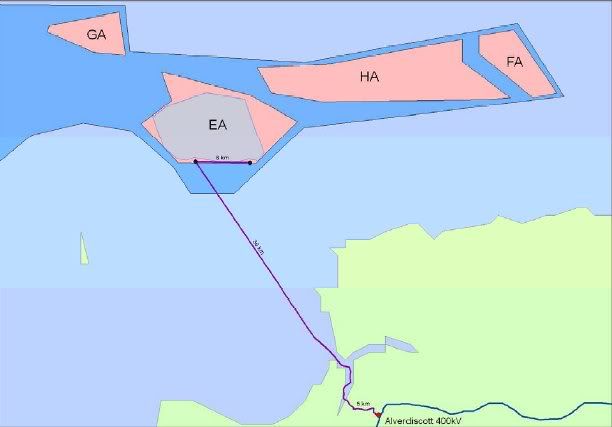
The plans for this Zone are more advanced, and we can read about what RWE are calling the Atlantic Array here. It will have a capacity of 1,500 MW and about a third of the area they are planning to develop will be in Welsh waters. This 500 MW will produce about 1.7 TWh of electricity a year at 38%.
-
Now let's add up the figures. Wales will, by about 2020, be producing something like 16.7 TWh of electricity a year from offshore wind. But the total consumption of electricity in Wales is currently only about 20 TWh. So the share from wind will equate to roughly 80% of all the electricity we use; domestic, industrial and commercial.
With figures of this magnitude, the amount of electricity we produce from onshore wind pales by comparison. Let's say we did go ahead and build onshore windfarms up to the installed capacity figures in TAN 8. That 1,120 MW would, at a capacity factor of 26%, produce 2.6 TWh of electricity a year. 2.6 TWh a year is by no means insignificant, and would be an acceptable way of producing renewable electricity if we had no other options. But we do have other options.
Adding offshore and onshore wind energy together, we will be producing some 18.3 TWh of electricity a year from wind, which equates to over 90% of our current needs. This is terribly unbalanced, and can only be sustainable in the current generating environment by having a large neighbour that generates much less electricity from wind than we do. To put this in perspective, this report shows that Denmark only generates 24% of its electricity from wind, Portugal and Spain 14%, Ireland, 10.1% and Germany 9.4%.
-
For this reason, I think that the target for onshore wind in Wales as set out in TAN 8 needs to be revised. Even though I think the arguments used against wind power are often overstated, and even though I don't object to any of the windfarms built so far in Wales, it is obviously better for us to switch the emphasis to offshore generation.
Obviously any figure I pick will be arbitrary, but it seems to me that it would be better to double the amount of onshore capacity in Wales than to triple it. That will leave opportunity for appropriately sized and sited windfarms and, as I suggested in my previous post, such smaller scale windfarms would be perfectly suited to be at least partly (if not fully) owned by the communities close to where they are located.

I now want to move on to the second aspect of Carwyn Jones' statement. It said:
In our view the TAN 8 capacities should be regarded as upper limits and we call upon UK Government to respect this position when they finalise the Renewable Energy National Policy Statement and to not allow proliferation when they take decisions on individual projects in Wales.
It is this overcapacity which has led to proposals for major new overhead grid infrastructure. We contend that the level of capacity within the Strategic Search Areas which we set in 2005 would negate the need for the large obtrusive pylons which are causing such concern. My Government would not support the construction of large pylons in Mid Wales and my Ministers are pressing this case with National Grid Transmission and with Ofgem.
It has always been our position, as set out in our Energy Policy Statement that such connections should be delivered by less intrusive techniques, and as sensitively as possible, including the use of undergrounding. In cases where communities get the disbenefits of major infrastructure without the economic advantages high voltage power brings to city areas, we believe a new approach must be taken to the undergrounding of high voltage power lines.
I think there is quite an element of doublespeak in the sentence I highlighted. If he is saying that the TAN 8 figures were chosen to keep them below the level that would require substantial improvements to the distribution infrastructure, I would find that hard to justify from the information in the Arup reports (Appendix C in particular). It appears to me to be a retrospective justification which was not part of his thinking (for Carwyn Jones was the minister responsible for TAN 8) at the time. If however he is simply talking about whether any improvements are by means of "large obtrusive pylons" or by less intrusive means such as undergrounding, then he is not actually saying anything at all. Any amount of capacity could be linked to the existing distribution infrastructure by underground cable ... it would just be a bigger cable.
So it again surprises me that Glyn Davies now suggests he would be satisfied (though surprised) if a windfarm could be connected by means of 132kV cable rather than 400kV cable. Here is an example of two 132kV cable routes side by side, and I don't think many people would be able to tell the difference between one of these and a route carrying 400kV cables.
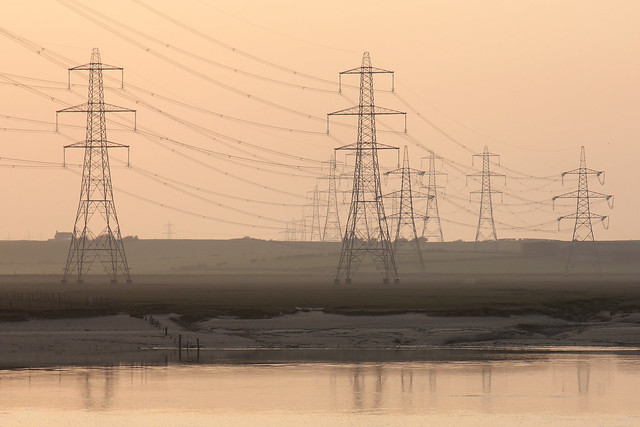
The point that matters more is the distinction between the National Grid and the power distribution companies. Generally speaking National Grid operates a network at 400kV and 275kV. 132kV is the next voltage step down, but is usually operated and maintained by the power distribution companies rather than National Grid. Generally speaking, it is easier and cheaper for a windfarm operator to connect to the distribution network rather than to the National Grid. According to Appendix C in the Arup report, a windfarm with an installed capacity of 100 MW can be connected to the distribution network at 132kV, and smaller ones of 20-25 MW at 33 or 66kV.
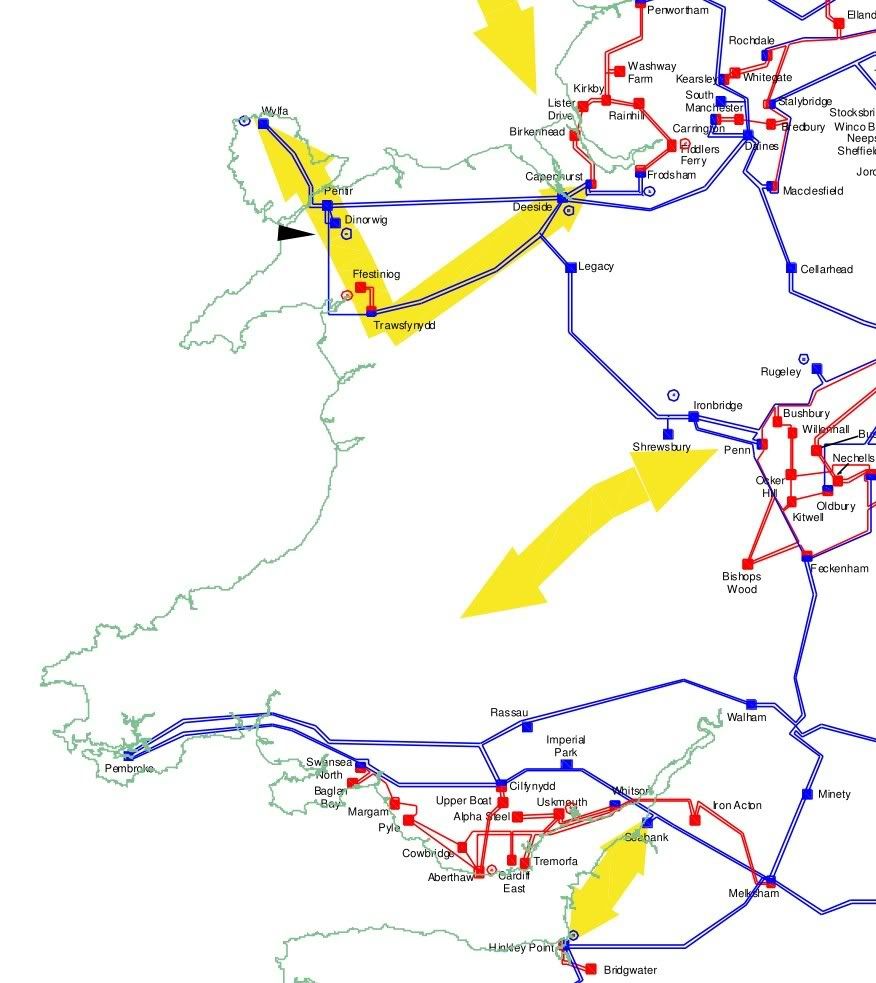
As can be seen on the map above (taken from this post) the National Grid in Wales has two main spurs, one in north and one in south Wales, but with no interconnexion between them. This situation is exacerbated by the fact that each is in a separate power distribution company area, giving no real incentive for any north-south interconnexion. It isn't too much of an exaggeration to say that both Scottish Power in the north and Western Power Distribution in the south both stretch themselves to get robust supplies into mid Wales from either direction.
It is impossible to devise an integrated energy strategy for Wales without addressing this, and this is in part why energy is not devolved to Wales as it is to Scotland. But we can solve both the physical and the political problem with better north-south interconnexions. This would allow electricity generated in mid Wales to feed into the distribution network both northwards and southwards, and therefore avoid the necessity to extend the National Grid into mid Wales at 400kV.
-
This means that fighting for energy to be devolved to Wales will reduce the necessity for 400kV cables between mid Wales and England. Surely that's a win-win situation for everybody in Wales. Of course if the Labour party had shown even the slightest degree of foresight, they would have devolved energy to Wales when they were in power at Westminster. But Carwyn Jones' late conversion to devolving this responsibility to Wales is surely better than him or his party not having been converted at all.
From this report yesterday, it looks like it won't be easy to win this responsibility in the face of an intransigent Westminster government that is much more concerned about Wales supplying electricity to England than Wales' own energy needs. But if Carwyn really is serious (and I do wonder whether he is just posturing, claiming to want something he suspects will be refused simply in order to be able to point the finger of blame at the Tories for refusing it) he will have wide support from across the political spectrum in Wales.









